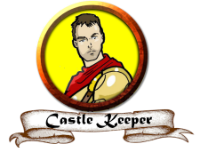David's solution would be the easiest, I think. However, if you need more manipulation to the roll before you retrieve the value (or a different manipulation every time), rollable tables might come up short. For instance, you roll from a rollable table with something like: [[ 1t[ResultsTable] ]] And the probabilities are governed by the weighting of the items in that table. If you want the probabilities to change from roll to roll, you'd have to do that manually. Maybe one character should roll straight against the table, but another person should be guaranteed a value no lower than a 3 (as some sort of demonstration of proficiency). In that case, I'd suggest Muler (working with ZeroFrame and SelectManager). These are all metascripts. With Muler, you can retrieve manipulated results using any modifications to the roll: get.ResultsMule.ResultsTable.[[1d10+3]].value/get ZeroFrame will extract the value of the roll and send it to the Muler call to retrieve the item from the Mule. Then, for a result like your example of a roll of 1, you could include inline rolls right in the result, and they will resolve (because ZeroFrame will recursively process them): Shadowy tendrils lash around you. Each creature of your choice that you can see within 30 feet of you must succeed on a Constitution saving throw or take [[1d12]] necrotic damage. You also gain [[1d12]] temporary hit points. Your embedded rolls are already made, and they are hoverable to show what was rolled (though for these it would be straightforward). Full Setup To do this, you'd create a Mule (an ability) on a character. I'll call that character "MuleBoy", and I'll call the ability/mule "RageResults". Fill that ability with text in the format of roll=value, like this: <=1=Shadowy tendrils lash around you. Each creature of your choice that you can see within 30 feet of you must succeed on a Constitution saving throw or take [[1d12]] necrotic damage. You also gain [[1d12]] temporary hit points. 2=You tp up to 30 feet to an unoccupied space you can see. Until your rage ends, you can use this effect again on each of your turns as a bonus action. 3=... ... >=10=... You could then use this in a roll template output (using ZeroFrame constructions). !&{template:default}[[1d10]]{{name=Rage! Rage! Ever, ever rage!}}{{Roll $[[0]].value=get.MuleBoy.RageResults.$[[0]].value/get}}{&mule MuleBoy.RageResults}{&simple} Output:





